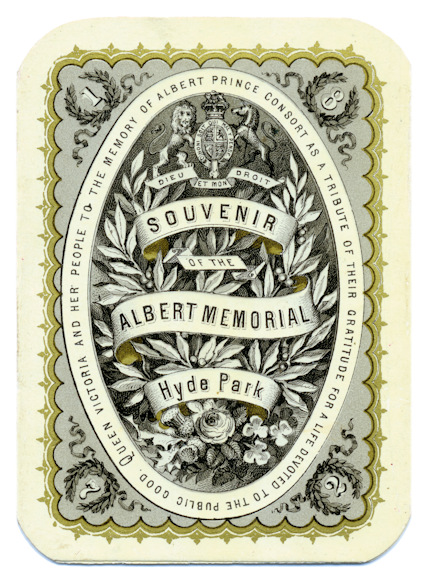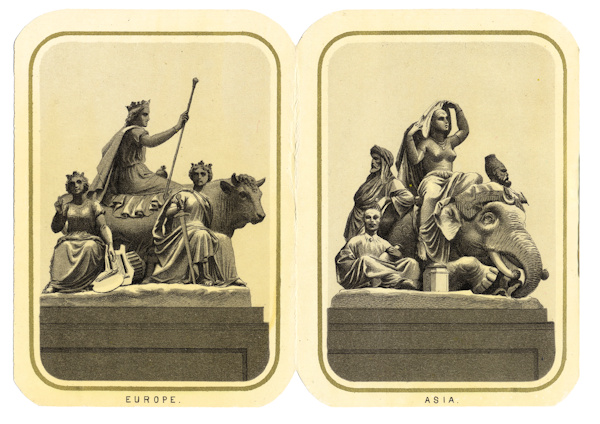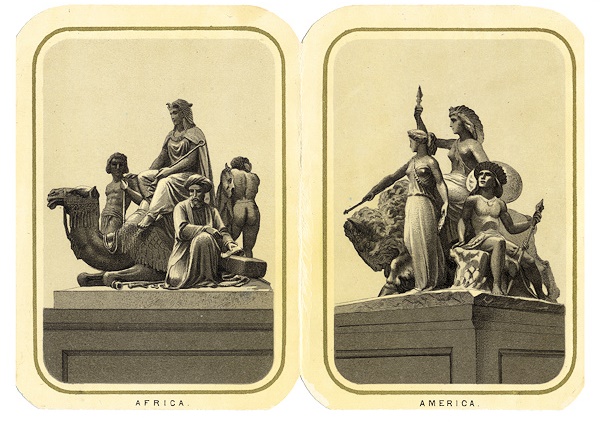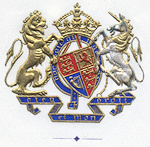 |
|
| News About Us Membership Events Links |
|
The Albert Memorial
The Albert Memorial in Kensington Gardens, Hyde Park, is one of London's most elaborate and magnificent monuments. It was commissioned by Queen Victoria to commemorate the death of her beloved husband, Albert Prince Consort, who died of typhoid in 1861. Designed by architect George Gilbert Scott the imposing memorial was opened to the public in 1872. Three year later in 1875 the fourteen foot gilded statue of the seated Prince holding the catalogue of The Great Exhibition was installed. On the outer edges of the monument’s boundary are four large groups of marble statuary representing the four continents – Europe, Asia, Africa and The Americas. Europe is represented by a bull, Africa by a camel, Asia by an elephant and The Americas by a bison.
On the south-west angle pedestal is Europe composed of five female figures, the central one is seated on a bull. Holding in her right hand a sceptre and in the left an orb. Asia is placed on the south-east angle pedestal. The central figure is a female seated on an elephant removing her veil in an allusion to the important display of the products of Asia at the Great Exhibtion in 1851.
On the north-east angle pedestal is Africa. An Egyptian princess seated on a camel is the main figure. The camel was chosen as it is indispensable in the African deserts, is used universally by traders and is characteristic of Egypt. America is placed on the northwest angle pedestal. The central figure of America is mounted on a bison, charging through the long prairie grass.
The dedicatory inscription, executed in mosaic on the monument, reads:
|
|
|
Home | News | About Us | Membership | Events | Links | Contact | Item of the month | Articles |
| Copyright © The Ephemera Society 2025. All Rights Reserved. |




